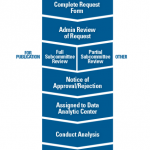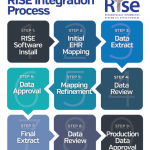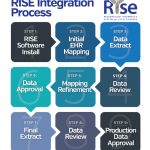I was also a practicing rheumatologist. The academic colleagues who had supported the idea of a registry a decade before had become members of a CORRONA Board of Directors. They had been part of the struggle and were fully aware that no excess funds existed to be shared for almost a decade. These same individuals encouraged me to pay myself back from the earlier personal investment that had sustained the effort at a critical time.
During the many seasons of CORRONA growth, I frequently reasoned that if we could only make it through a given calendar year our long-term survival would likely be assured. This was wishful thinking. I learned that any endeavor requiring outside funding (and yes, CORRONA had to be managed with business principles) could only be sustained with black ink on balance sheets in the prior two quarters.
I read and digested management books (Note: Everything by Tom Peters is great), subscribed to and read valuable articles in the Harvard Business Review and tried to apply what I was learning to running CORRONA. (I have to say that I gained a newfound respect for what was needed to be successful in a business enterprise. I had always viewed business types—the suits—with a degree of disdain. But I learned that for any initiative requiring continued funding to survive and thrive, one needed diligence, creativity, vision and the willingness to take informed risks. Shooting from the hip was not a good business model.)
Expansion & More Challenges
The next years of CORRONA, now called CorEvitas, saw an expansion into 42 states with well over 150 sites enrolling patients and contributing data. We had become the largest rheumatology registry in the world. New European and Australian RA registries had been established in the first decades of this century. These registries were also sponsored by the pharmaceutical industry (with the exception of the independent, state-sponsored Swedish national ARTIS registry), starting up some years after CORRONA. The pharma-sponsored registry model had been embraced in different countries, although many country-specific differences in registry management and support existed.
And in 2014, the ACR launched the Rheumatology Informatics System for Effectiveness (RISE) registry (see sidebar, p. 57) to answer a need for quality reporting and quality improvement measures.
CORRONA could never rest on its laurels. Expansion of sites; the need for new and talented staff; refinement of clinical questionnaires, including new targeted adverse event forms; and strong IT and biostatistical support created relentless financial challenges.


